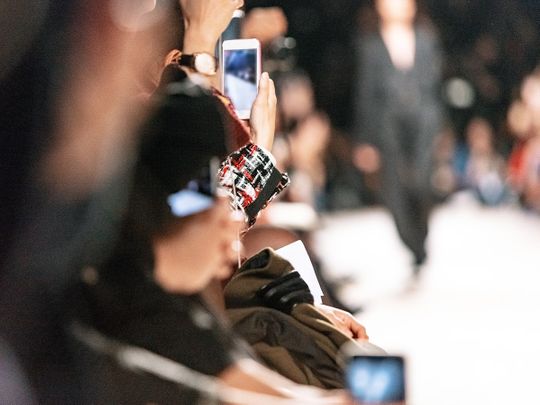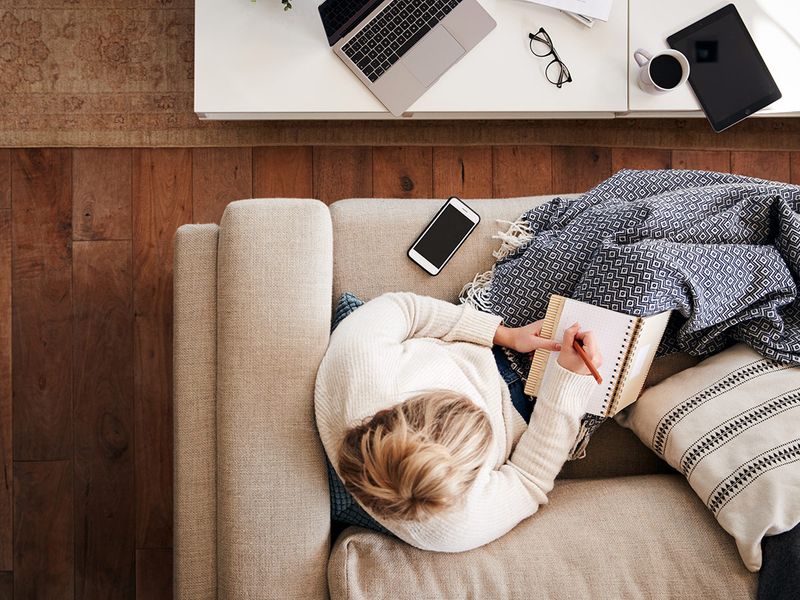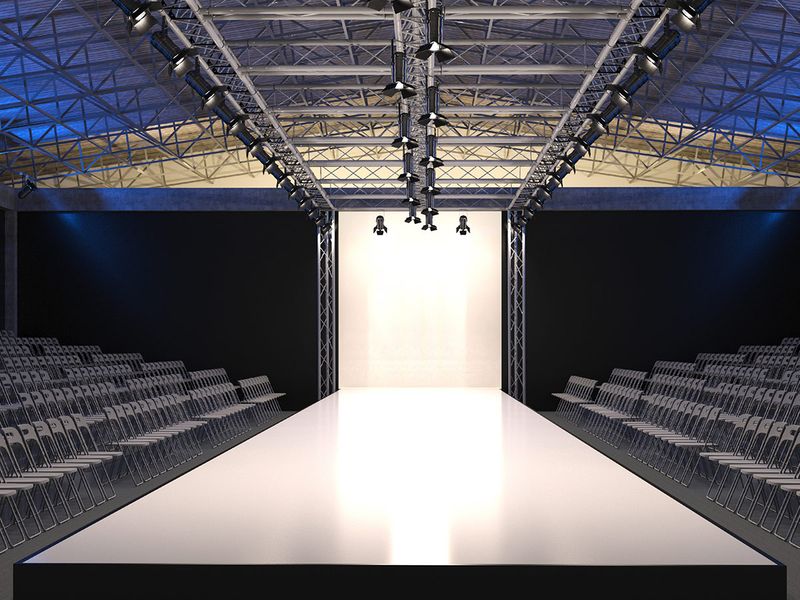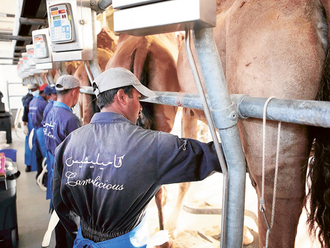
Given the chaos and uncertainty wrought by the COVID-19 pandemic, trying to pin down the top fashion and beauty trends of a year hence feels as futile as trying to pick a living room wallpaper pattern while your house is on fire. But here’s what the luxury landscape might look like 12 to 18 months down the road.
The general consensus? Although no one — not even the trend analysts who make their living forecasting such things — is exactly sure what the future of fashion looks like, what they agreed on is that, because of the pandemic, the future of retail and design is actually arriving way ahead of schedule, with back-burner projects front-burnered and fashion’s never-ending hamster wheel getting a good, hard look.

“We had trends we were forecasting for 2021 that we’re seeing become a reality now,” said Ana Correa, an associate editor for footwear and accessories at trend-forecasting firm WGSN. “They’ve accelerated because of the pandemic for sure.”
Correa was referring to two trends in particular: the home becoming a more important part of daily life and what she calls “designed-for-digital” - things that resonate on a Zoom call or in an Instagram post such as statement earrings and iridescent colours. But the pandemic’s role as an accelerant can be seen and felt across the entire fashion and beauty landscape.
CHOP AND CHANGE YOUR PRODUCT OFFERING
At Los Angeles-based handbag and accessories label Clare V., founder Clare Vivier said the future careened into view sooner than expected in two ways. When the coronavirus forced her to furlough employees and shutter her eight bricks-and-mortar retail stores in March, Vivier said she and her husband, Thierry, logged a lot of time in the brand’s L.A. warehouse, packing and shipping online orders.
“I realised we were shipping so much apparel — sweatshirts and T-shirts all day long — and I said, ‘We need to get into more apparel immediately,’” said Vivier, who built her 12-year-old brand on the popularity of cheery, colourful handbags, totes and accessories. “And that’s what we did as soon as our apparel factory opened back up.” She called the acceleration of her label’s fledgling apparel program “monumental.”
Then when her retail stores reopened (including a new boutique at the Montecito Country Mart that opened Aug. 15), Vivier decided the time was right to pull the trigger on another idea she’d been thinking about but had yet to implement: a tech feature on her website that allows customers to live-chat with an honest-to-goodness, actually-in-the-store employee, not a chat-bot or off-site third-party customer-service representative deep in the bowels of the internet.
“COVID has made us speed up like five to 10 years,” Vivier said. “This is something that we’d wanted to do, but it was fast-tracked real quick.” She added that the social-distancing aspect of the pandemic has, more generally, accelerated the wider embrace of e-commerce. “People who were a little bit shy to shop online before are definitely not shy anymore.”
OFFER THE DIY OPTION
The rising popularity of DIY options like gel manicure kits in the beauty space makes sense given the difficulty of staying physically distant.
Luxury fashion has been having its own DIY moment too. Examples include a colour-blocked JW Anderson cardigan that became the focus of a viral crocheting challenge on the mobile video platform TikTok and former Givenchy artistic director Clare Waight Keller showing readers of the New York Times how to make a blanket cape in that newspaper’s Designer D.I.Y. series.
In April, when L.A.-based designer Reese Cooper, a 2020 nominee for the Council of Fashion Designers of America’s emerging designer of the year award, offered a $98 DIY kit that included all the materials and instructions to make an at-home version of his signature workwear-inspired coat right down to the patches and snap buttons, the run of 1,000 kits sold out immediately. (The jacket kits are back in stock now, along with shirt-dyeing kits and affix-your-own embroidered patches, via his label’s dedicated DIY page.)
FASHION WEEK REFORMATTED
The future of the fashion-week format has yet to come into focus. The first inkling might come when a much-shortened four-day New York Fashion Week, featuring a mix of in-person appointments and digital activations (think virtual runway shows), kicks off Sept. 13. Desinger John Elliott thinks the slowing of the hamster wheel caused by efforts to flatten the coronavirus curve could lead to long-needed, long-term, fundamental changes to the fashion-industrial complex.

“I don’t know how many designers would want to admit it,” Elliott said, “but once you’re on the treadmill of doing shows and launching collections, there’s a fear that everyone has that if you jump off the treadmill, people are going to worry and say, ‘Oh man, that brand is in trouble.’ Now, because of this, everybody has the ability to do what’s best for them, and that’s a beautiful thing. I think it’s going to make product better. I think it’s going to [result in] more creative ways to showcase product, to launch collections and to highlight ideas. … [And] it’s going to allow for product to be a little bit more purposeful.”
Elliott isn’t alone in thinking the dark cloud of COVID-19 might have a silver lining for the future of fashion. “Making the Cut” reality show winner Jonny Cota, who channeled some of his $1 million in winnings into a futuristic and pandemic-proof revamp of his store at the Row DTLA (think virtual store tours, cashless and touchless checkouts and many a scannable QR code), is similarly upbeat about what the fashion world might look like in the future.
“At the risk of sounding like a total optimist, I think the year ahead really has limitless possibilities,” Cota said. “The only constant in this world is change, and there hasn’t been much change in the fashion industry in the last 15 years. [Now] everything’s shifting. Major retailers are fading away. Fashion week is shifting. I’m really excited about how fashion designers can reimagine the fashion world. I think it’s going to be smaller collections, a language that’s geared more directly to our customers, and kind of redefining how we present the fantasy that is fashion.”
If Elliott and Cota are right in their hopes that the pandemic might in some weird way turn out to be just what the hidebound fashion world needs, then no matter how fast it accelerates the future can’t get here soon enough.








